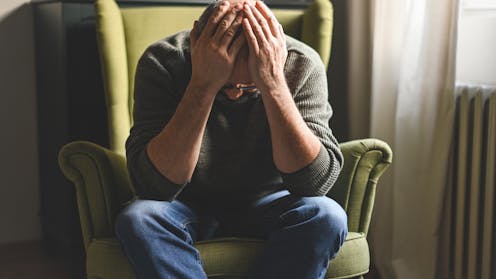Long COVID is more than fatigue. Our new study suggests its impact is similar to a stroke or Parkinson’s
- Written by Danielle Hitch, Senior Lecturer in Occupational Therapy, Deakin University

When most people think of COVID now, they picture a short illness like a cold – a few days of fever, sore throat or cough before getting better.
But for many, the story doesn’t end there. Long COVID – defined by the World Health Organization (WHO) as symptoms lasting at least three months after infection – has become a lasting part of the pandemic.
Most research has focused on describing symptoms – such as fatigue, brain fog and breathlessness. But we know less about their effect on daily life, and this hasn’t been well studied in Australia. That’s where our new study, published today, comes in.
We show long COVID isn’t just uncomfortable or inconvenient. People with the condition told us it can profoundly limit their daily life and stop them from doing what they want to do, and need to do.
What is long COVID?
Long COVID affects about 6% of people with COVID, with more than 200 symptoms recorded. For some, it lasts a few months. For “long haulers” it stretches into years.
The size of the problem is hard to measure, because symptoms vary from person to person. This has led to debate about what long COVID really is, what causes it, and even whether it’s real.
But mounting evidence shows long COVID is very real and serious. Studies confirm it reduces quality of life to levels seen in illnesses such as chronic fatigue syndrome, stroke, rheumatoid arthritis and Parkinson’s disease.
Here’s what people with long COVID told us
We surveyed 121 adults across Australia living with long COVID. They had caught COVID between February 2020 and June 2022, with most aged 36–50. Most were never hospitalised, and managed their illness at home.
But months or years later, they were still struggling with daily activities they once took for granted.
To understand the impact, we asked them to complete two surveys widely used in health research to measure disability and quality of life – the WHO Disability Assessment Schedule (WHODAS 2.0) and the Short Form Health Survey (SF-36).
These surveys capture people’s own voices and lived experience. Unlike scans or blood tests, they show what symptoms mean for everyday life.
The results were striking.
People with long COVID reported worse disability than 98% of the general Australian population. A total of 86% of those with long COVID met the threshold for serious disability compared with 9% of Australians overall.
On average, people had trouble with daily activities on about 27 days a month and were unable to function on about 18 days.
Tasks such as eating or dressing were less affected, but more complex areas – housework and socialising – were badly impacted. People could often meet basic needs, but their ability to contribute to their homes, workplaces and communities was limited.
Quality of life was also badly affected. Energy levels and social life were the most impacted, reflecting how fatigue and brain fog affect activities, relationships and community connections. On average, overall quality of life scores were 23% lower than the general population.
What are the implications?
International research shows similar patterns. One study across 13 countries found similar levels of disability. It also found women had higher disability scores than men. As long COVID disability has many facets and can change a lot over time, it doesn’t fit into traditional ways of providing health care for chronic conditions.
Another key insight from our study is the importance of self-reported outcomes. Long COVID has no diagnostic test, and people often report health professionals are sceptical about their symptoms and their impact. Yet our study showed people’s own ratings of their recovery strongly predicted their disability and quality of life.
This shows self-reports are not just “stories”. They are valid and reliable indicators of health. They also capture what medical tests cannot.
For example, fatigue is not just being tired. It can mean losing concentration while driving, giving up hobbies, or pulling away from cherished friendships.
Our study shows long COVID disrupts futures, breaks connections, and creates daily struggles that ripple out to families, workplaces and communities.
What needs to happen next?
Evidence presented to the 2023 parliamentary long COVID inquiry estimates hundreds of thousands of Australians are living with long COVID.
We know disadvantaged communities are even more likely to be impacted by the cascading effects of long COVID. So ignoring the scale and severity of long COVID risks deepening inequality and worsening its impact even further.
By building services based on lived experience, we can move towards restoring not just health, but dignity and participation in daily life for people with long COVID.
We need rehabilitation and support services that go beyond basic medical care. People need support to manage fatigue, such as “pacing” and conserving energy by not overexerting themselves. Workplaces need to accommodate people with long COVID by reducing hours, redesigning job demands and offering flexible leave. People also need support to rebuild social connections.
All this requires people with long COVID to be thoughtfully assessed and treated. Listening to patients and valuing their experience is a crucial first step.
We’d like to acknowledge the following co-authors of the research mentioned in this article: Tanita Botha, Fisaha Tesfay, Sara Holton, Cathy Said, Martin Hensher, Mary Rose Angeles, Catherine Bennett, Bodil Rasmussen and Kelli Nicola-Richmond.
Authors: Danielle Hitch, Senior Lecturer in Occupational Therapy, Deakin University



















